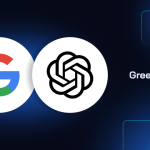The ancient barrier between human and dolphin communication is beginning to crack, thanks to a new artificial intelligence (AI) model built by Google. This model, called DolphinGemma, studies dolphin sounds to predict patterns and might someday let humans and dolphins talk to each other.
The AI model will help with research this summer in the Bahamas, where scientists have studied Atlantic spotted dolphins for years. It analyzes the whistles, clicks, and burst pulses that dolphins use when communicating.
“The goal would be to one day speak Dolphin,” said Dr. Denise Herzing, founder of the Wild Dolphin Project (WDP), which has gathered dolphin sounds and behaviors for over 40 years.
The project combines Google’s AI expertise with WDP’s extensive audio database. DolphinGemma functions like other large language models but focuses on animal sounds instead of human words.
“If dolphins have language, then they probably also have culture,” explained Dr. Thad Starner, a Google DeepMind research scientist working on the project.
The system uses Google Pixel 9 phones in waterproof cases as part of an underwater wearable technology called Cetacean Hearing Augmentation Telemetry (CHAT). This allows researchers to record and analyze dolphin sounds in real-time while swimming with the animals.
Source: Google
Earlier attempts used large underwater keyboards, but the CHAT system is wearable. It plays artificial whistles linked to objects and notices when dolphins copy these sounds.
WDP researchers believe dolphins use special whistles as names, with mothers using unique calls for their babies. They’ve also found “squawks” during fights and “buzzes” during mating.
The AI model has about 400 million parameters and runs efficiently on mobile devices. This allows for immediate analysis in the field rather than waiting to process recordings later.
Google plans to make DolphinGemma available as an open model by mid-2025, allowing other researchers to adapt it for studying different cetacean species.
While the technology won’t immediately allow full conversations with dolphins, it’s an important step toward understanding if dolphin communication forms a real language. This breakthrough could change how we understand animal intelligence and reveal hidden aspects of dolphin society.




















